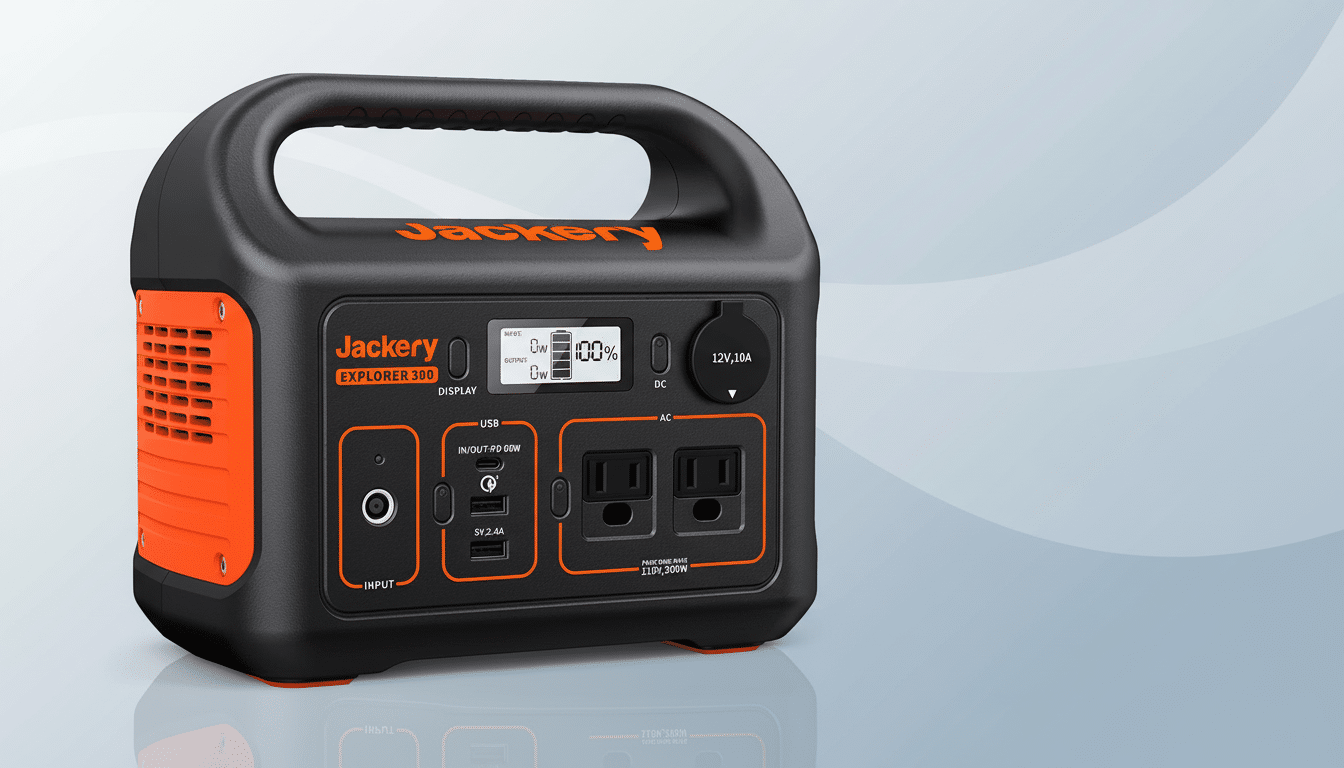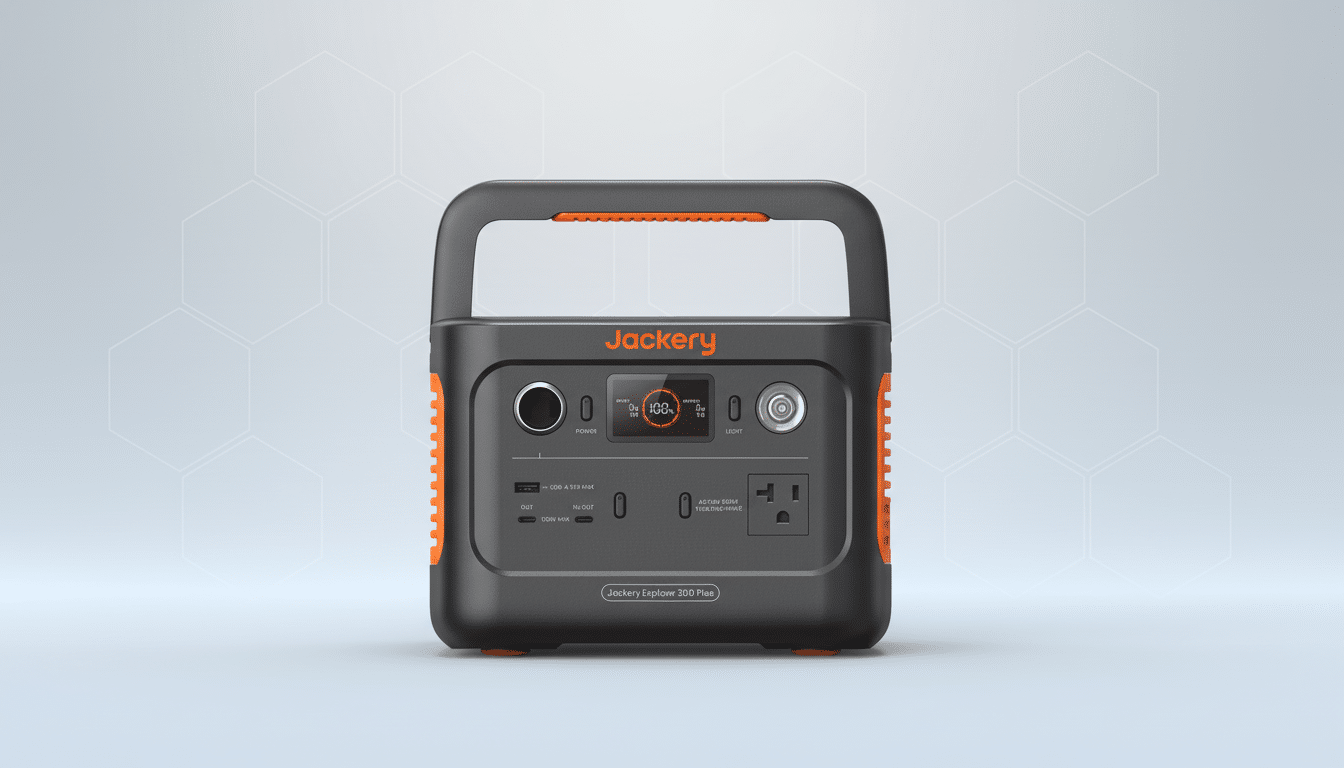The Jackery Explorer 300, which is a compact power station that has seen plenty of use among campers and those prepping for emergencies, falls under $200 now (I saw it in November 2020 at a low price of $169). That knocks a full 23% off its usual $259 list price, and it also ties with the lowest recorded deal, according to the price-tracking service CamelCamelCamel. If you’ve been wanting a power solution that’s easy to travel with and shove into a closet, car trunk or gear bin, and not break the bank doing it, now is an excellent time to buy.
Why This Sub-$200 Deal Is So Nifty and Worth Considering
When it comes to the value proposition of portable power, performance is a factor of watt-hours per dollar, build quality and real-world utility. When it’s on sale around $169, keep in mind the Explorer 300’s roughly 293Wh capacity chalks up to an aggressive cost-per-Wh for a brand-name unit. That’s uncommon in a category where premium models often flirt with dollars per Wh outside of sales. Portable power stations have been on a slow and steady march toward commoditization for the past few years, as market analysts at Grand View Research observe growth due in small part to outdoor recreation trends and the need for home backups (as much because of recent disasters like hurricanes as anything else, but still).
- Why This Sub-$200 Deal Is So Nifty and Worth Considering
- Key Specs That Matter for the Jackery Explorer 300
- Real-World Use Cases and Estimated Runtime Details
- Solar and Recharge Options for On-the-Go Power Users
- How It Compares in This Category and Key Trade-Offs
- Who Should Get This Deal and Who Might Consider Upgrading
- Bottom Line: Why This Price Makes Sense Right Now

Key Specs That Matter for the Jackery Explorer 300
The Explorer 300 combines a 293Wh lithium-ion battery with a 300W pure sine wave inverter (500W surge), making it adequate for phones, tablets, cameras, drones and most ultraportable laptops. It’s about seven pounds and about nine inches long by eight inches tall, small enough to hold in one hand. The interface is easy to use, the display is legible, and pass-through charging allows you to power your devices while charging the unit.
The port selection is utilitarian for mixed gear: two AC outlets, one USB-C PD 60W port for speedy laptop or tablet charging, a Quick Charge 3.0 USB-A, a regular USB-A and a 12V car socket.
It recharges to 80% from the wall in just over two hours, Jackery claims. It can also be charged from the 12V socket in a car while on the road, or by using a compatible solar panel.
Real-World Use Cases and Estimated Runtime Details
Realistically, 293Wh is enough to provide you with some real flexibility over the course of a weekend, or during a short outage. Assuming inverter and conversion losses:
- A smartphone with a modern battery (12–13Wh capacity): ~15–18 full charges
- An ultraportable laptop (50Wh internal capacity): 4–5 charges over USB-C
- A mirrorless camera’s big-ass battery (14Wh or so): about a dozen top-offs
- A 10W LED lantern: runs for 20+ hours
- A CPAP using 30W: usually lasts a full night on one charge, depending on settings and humidifier use
It won’t, however, power high-draw appliances like space heaters, hair dryers or most coffee makers that are rated at over 300W continuous. For campsite cooking, consider low-wattage gear and propane stoves; for productivity, laptops, tablets and camera batteries are safer bets.

Solar and Recharge Options for On-the-Go Power Users
Paired with a 100W folding panel, the Explorer 300 can recharge off-grid in about five to six hours of strong sun, thanks to an MPPT charge controller that makes solar energy more efficient. It’s a suitable solution for van-lifers and weekend overlanders who replenish their portable batteries during the day. At home, AC charging continues to be the fastest and most reliable way, with vehicle charging serving as a useful fallback to top off on your drive to wherever you are headed.
How It Compares in This Category and Key Trade-Offs
At this price point, competitors are small LiFePO4-based ones such as the Bluetti EB3A and some Anker models that occasionally dip into the $199 range. The specific Li-ion pack in the Explorer 300 is rated for a few hundred cycles before its capacity begins to taper, whereas LiFePO4 chemistry generally has longer cycle life. In return, Jackery’s unit is one of the lightest in its class, with a straightforward interface and whisper-quiet operation at typical loads.
That balance of weight, ports and price is appealing for many buyers — especially if you don’t find yourself relying on a power station frequently, say for camping or tailgates, or as backup in short-term outages. Consumer safety organizations such as the Centers for Disease Control and Prevention consistently advise that gas generators not be used indoors, due to the risk of carbon monoxide; small battery stations like this one are a safer, silent alternative for running essentials inside city dwellings during brief outages.
Who Should Get This Deal and Who Might Consider Upgrading
The Explorer 300 is the pick if you need a light, travel-ready station that can keep small electronics alive without forcing you to get lost in the weeds of systems setup. Great for photographers on location, campers running lights and a projector, remote workers who need a laptop charge in an emergency and families adding a quiet power backup to their storm kit. If you have a tendency to run power tools or cooking appliances at the same time, consider upgrading to something higher-wattage; otherwise, with its sub-$200 price tag, the 300 is an intelligent pick for beginners.
Bottom Line: Why This Price Makes Sense Right Now
It’s not often that the Jackery Explorer 300 drops down to this price and, brand name aside, its blend of actual usefulness (even for a portable charger in this class) and true portability makes the current sub-$200 pricing tough to dismiss. If you haven’t been able to pull the trigger on a portable power station that nails the basics in a smaller package, this is your chance to do it.

